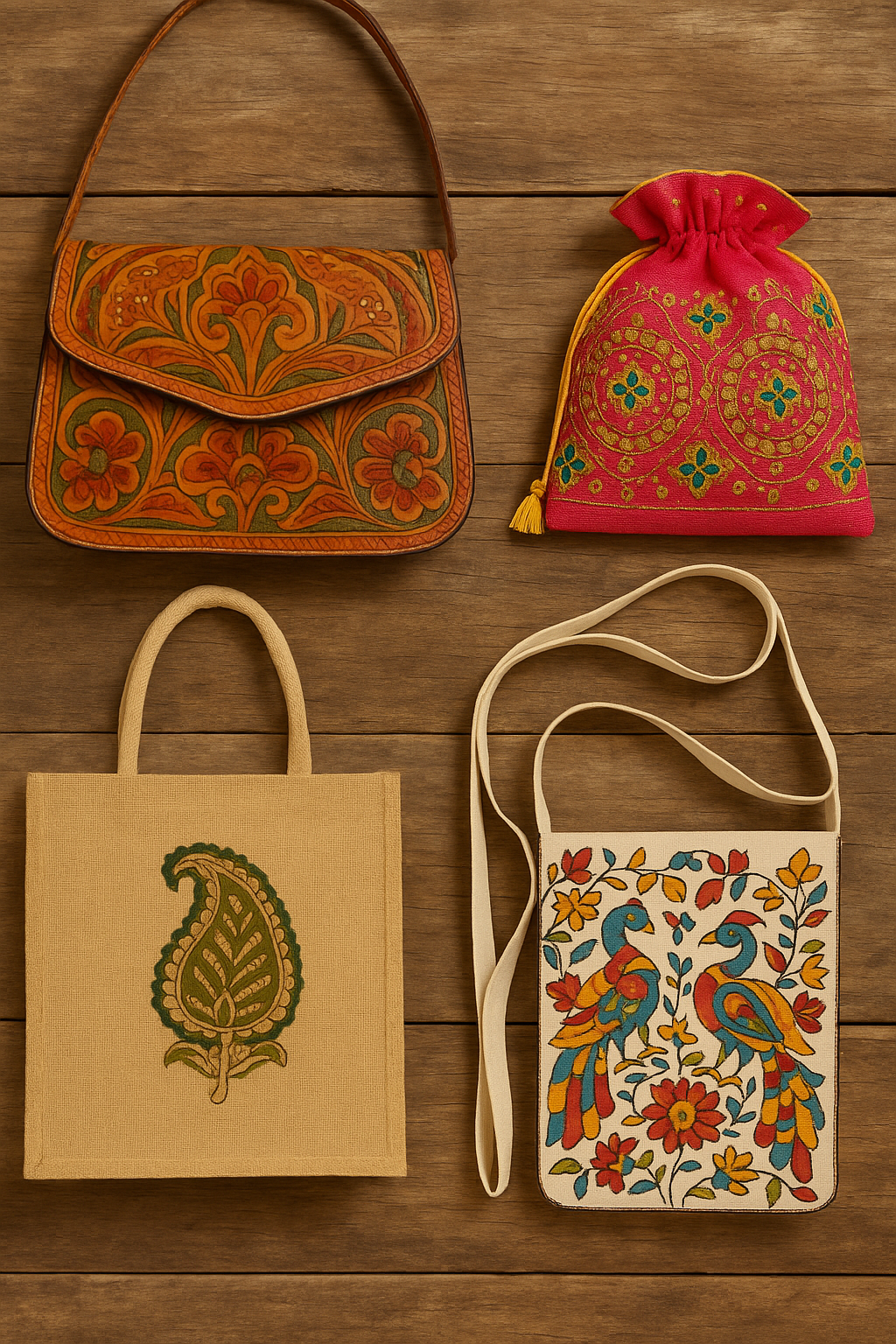
How Indian Bags Reflect Our Rich Cultural Heritage
Share
Introduction
India is a land of colors, cultures, and crafts. From textiles to jewelry, every accessory tells a story—and Indian traditional bags are no exception. These beautiful, handcrafted bags are more than just fashion statements; they carry the essence of India’s cultural heritage, regional art, and centuries-old craftsmanship. In this blog, we explore how ethnic bags from different parts of India reflect our country’s rich traditions and artistic legacy.
1. The Artistry Behind Every Stitch
Unlike mass-produced bags, artisan-made Indian bags are crafted using traditional techniques that have been passed down through generations. Whether it's embroidery, hand painting, block printing, or leather embossing, each method reflects the unique heritage of its region.
Shantiniketan Bags from West Bengal are known for their leather engraving and tribal art patterns.
Rajasthani Embroidered Clutches feature mirror work and vibrant thread designs.
Kalamkari Cotton Sling Bags tell stories through ancient hand-painting styles.
Each bag is a living canvas showcasing folk tales, flora, fauna, and spiritual symbols, making them deeply meaningful accessories.
2. Regional Diversity in Indian Handbags
India’s regional diversity is beautifully reflected in the variety of traditional bags:
| Region | Popular Bag Style | Key Features |
|---|---|---|
| West Bengal | Shantiniketan Leather Bags | Hand-embossed, natural dyes, folk art |
| Rajasthan | Embroidered Potli & Sling Bags | Mirror work, bright threads, gota patti |
| Gujarat | Kutchi Embroidery Bags | Geometric motifs, vibrant color palette |
| South India | Thamboolam & Kalamkari Bags | Temple art, natural block prints |
| North-East | Tribal Jhola & Hemp Bags | Eco-friendly materials, earthy textures |
These ethnic handbags are not just accessories; they are cultural expressions that promote India’s handmade heritage.
3. Eco-Friendly and Sustainable Fashion
Many traditional Indian bags are made using natural and eco-conscious materials like:
- Jute
- Cotton
- Vegetable-tanned leather
- Hemp fabric
This makes them a perfect choice for sustainable fashion lovers. By choosing these bags, you’re not only embracing style but also supporting the environment and rural communities.
4. Supporting Indian Artisans
Each Indian traditional bag you buy contributes to preserving indigenous craftsmanship and empowering rural artisans, especially women. At A.P. Bag Bhandar, our mission is to bring these timeless art forms to your wardrobe while helping artisans earn fair livelihoods.
By choosing handcrafted bags, you're saying yes to:
- Slow fashion over fast fashion
- Quality over quantity
- Craftsmanship over machine-made
5. The Perfect Fusion of Tradition and Modern Style
The beauty of Indian bags lies in their versatility. Whether you're wearing a kurti and jeans, a saree, or a boho dress, these bags add a touch of tradition and stand out effortlessly.
Use a handmade cotton sling bag for college, a Shantiniketan leather tote for the office, or a jute handbag for daily shopping. Whatever the occasion, these bags blend style with tradition.
Conclusion
Indian bags are more than accessories—they’re expressions of culture, art, and identity. Every stitch, every color, and every design tells a story rooted in our land. So, the next time you carry one of our handcrafted pieces, know that you are carrying a part of India’s cultural soul.
Explore our collection of traditional Indian bags on apbagbhandar.in and own a piece of heritage you’ll cherish.
